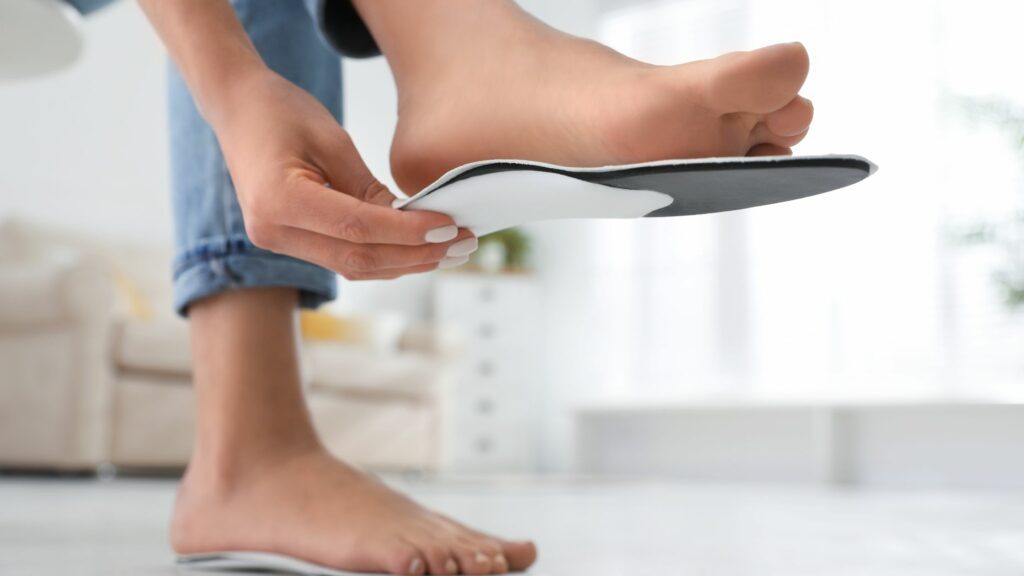
Healthy Spine, Healthy Life – The Connection Between Orthotics and Physiotherapy
Our feet are the building blocks of our body, quite literally our foundations. Yet, so often, we are oblivious to the critical role they play in maintaining the health of our spine. The ergonomics of our body’s skeletal system are a complex interplay, where alignment issues at the foundation can lead to cascading problems higher up — namely, the spinal column. Knowing the connection between orthotics and physiotherapy is essential to understanding the underpinning of our structure.
In our active lives, whether running marathons, working out at the gym or simply performing daily tasks, the health of our feet is the unsung hero that ensures our spine remains in tip-top shape. This blog will explore the intimate relationship between orthotics and physiotherapy in safeguarding our spinal health and explain why investing in your feet is an investment in your overall wellbeing.
Understanding the Foundation of Your Health
The feet are a masterpiece of bioengineering, with each one containing 26 bones, 33 joints and a vast network of tendons and ligaments. Yet, we often neglect these intricate structures, shoving them into restrictive shoes or forcing them to adapt to unnatural surfaces. Over time, these poor foot practices can lead to a myriad of issues, from plantar fasciitis and flat feet to ankle injuries and bunions.
Misalignment in the feet has a domino effect on the rest of the body’s musculoskeletal system, often resulting in spinal problems. For instance, overly pronated feet where the arch flattens, can lead to the inward rotation of the shins and knocked knees. This, in turn can overstrain the medial part of the knee and the hip, potentially leading to pelvic tilt and back pain.
The Role of Orthotics
Orthotics are custom-designed or over-the-counter shoe inserts that treat biomechanical foot disorders. They are not one-size-fits-all solutions but are tailor-made to address specific issues. By correcting foot posture, providing support and cushioning, orthotics aid in aligning the body’s musculoskeletal structure, which can significantly affect the spine’s health.
People often consider orthotics for comfort but their impact goes far beyond that. The redistribution of pressure and correction of gait abnormalities can prevent excessive stress on the back. They are particularly effective for those with uneven leg length, one of the often-overlooked causes of back pain.
The Intersection of Physiotherapy
Physiotherapy is a crucial component in the continuum of care for spinal health. Physiotherapists assess muscle imbalances, joint movement and the entire kinetic chain that could affect the spine. Through a combination of exercises, manual therapy and education, physiotherapy targets the root causes of spinal issues.
For those with foot-related spinal problems, physiotherapy can help the body adjust to new patterns encouraged by orthotics and address any secondary issues that may have arisen. This multidisciplinary approach ensures that each body part works harmoniously, reducing the risk of recurring problems.
Preventing Spinal Issues with Foot Care
The complexity of the feet means that even the slightest misalignment or discomfort can have rippling effects. Regular foot care, which includes stretching, wearing appropriate footwear and if necessary, using orthotics, is a proactive step towards maintaining spinal health.
For athletes, proper foot maintenance is even more critical. Each stride with incorrect foot positioning can accumulate into significant issues over time. Sports medicine professionals often recommend orthotics to help athletes maintain a healthy posture during intense training and competition, thus reducing the risk of sports-related spinal injuries.
Custom Orthotics vs. Over-the-Counter Solutions
There’s a misconception that over-the-counter orthotics are as effective as custom ones. While non-custom alternatives may provide some benefit for mild issues, they cannot replace the precision and support that comes from orthotics designed specifically for an individual’s needs.
Custom orthotics, prescribed by a Physiotherapist, consider the unique biomechanics of a person’s feet. They are crafted to provide support exactly where it’s needed, adjusting the angles at which the foot contacts the ground and accommodating any structural abnormalities. This personalised fit contributes to a more effective correction of gait and posture, which can play a significant role in preventing and managing spinal issues.
Synergy in Action
The collaboration between orthotics and physiotherapy is a true example of synergy in action. Where orthotics provide the ongoing support and correction, physiotherapy offers the patient the means to respond and adapt to that support. The result is a body that is equipped to maintain the health of its structures, specifically the spine. Tailored exercise programs designed by physiotherapists not only aid in rehabilitation but also serve as preventative measures, going together with the ongoing use of orthotics.
For individuals struggling with spinal issues, approaching the problem holistically is key. This means addressing foot health as an integral part of spinal health. By seeking the expertise of a Physiotherapist who specialises in Orthotics, patients can ensure they are taking the necessary steps to keep their spine aligned and pain-free.
Don’t wait for pain to act; start prioritising your feet and see the positive ripple effect it has on your entire body. Your spine will thank you for it.